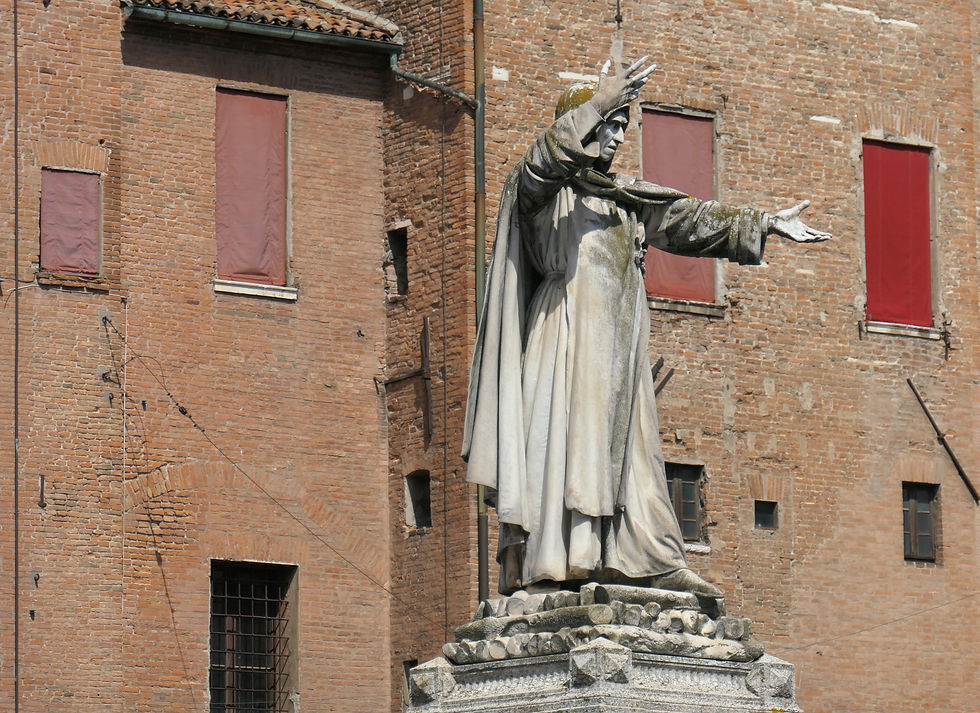During the very same week in 1492 that an Italian set out from Spain in the Santa Maria to discover the Americas, a Spaniard in Italy was elected Pope. The explorer of course was Columbus and the new Pope was Rodrigo Borgia.

And these days when Columbus Day is being routinely cancelled all across America it’s worth noting that in three Papal bulls issued in quick succession on Columbus’ return, the new Pope granted full rights to Spain over these new territories, including the use of slavery it would appear, although Vatican scholars naturally dispute this. So don't blame Columbus, who was simply an explorer.
Alexander VI, as the Borgia Pope styled himself, is perhaps a more appropriate target, but not that it really matters because he doesn’t have much of a reputation to ruin and there are probably very few statues of him anyhow.
This book, called simply ‘The Borgias’, is a return to my favorite historical author, Christopher Hibbert, and not for the last time. There’s lots of red meat in the Borgia family for him to feast on in his typical ‘thriller’ writing style because the Borgias coincided with an interesting time in Italian history or, more accurately perhaps, made a very full contribution to making it one of the most interesting periods of Renaissance Italy.
There’s a reason why the wonderfully funny 1984 Roberto Benigni film that I’ve mentioned before, ‘Non ci resta che piangere’ was set in 1492 because it was in this year and the years shortly afterwards that all of the following events took place in addition to the famous voyage of Columbus. The story of Rodrigo, Cesare and Lucrezia Borgia is woven throughout this entire period:
- Lorenzo the Magnificent, the greatest of the Medici dynasty, died in 1492.
- Leonardo da Vinci was already a well established artist by this time and was about to embark on his painting of ‘The Last Supper’ after his initial service in Milan as a planner of elaborate banquets that we spoke about in our article on La Colombera wine. A short time later in 1503 Leonardo entered the service of Cesare Borgia, the son of Pope Alexander VI, acting as a military architect and engineer and traveling throughout Italy with his new patron.
- In 1494 the French armies swept into Italy with the new mobile artillery that rendered early Renaissance Italian city walls obsolete, causing mayhem everywhere and a return to the drawing board for the architects of city walls in Italy, including Lucca. The days of the Italian City States were numbered however and after 1494 foreign invasions by powerful armies became a constant feature of Italian life.

- The Medici were expelled from Florence and the ‘mad monk’ Savonarola overplayed his hand and ultimately met a very grisly end in 1498 in the Piazza della Signoria in Florence.
- By fathering seven children and using his office to enrich his family, Pope Alexander VI created the febrile conditions for Martin Luther to cause enormous trouble for his successors, leading ultimately to the Reformation.
- And don’t give any credit to Alexander VI for the most famous work of art sculpted in Carrara marble during his tenure as Pope, because Michelangelo Buonarroti’s Pietà was commissioned not by him but by the French ambassador (and Cardinal) in Rome.
- At the same time as da Vinci was in the service of Cesare Borgia, Machiavelli was observing all the machinations of power and a few years later wrote it all down in his most famous work ‘The Prince’, which, I might add, was part of my curriculum 50 years ago though I don’t remember understanding in my ignorant youth the proper context in which it was written.
- Lucrezia Borgia also proved herself worthy of the Borgia name because her life involved several marriages, a few bodies floating down the Tiber and at least 10 children. But she did gain some respectability in the end in the noble House of Este in Ferrara.
And if all of the above wasn't enough to be going on at the same time as the Borgias held powerful positions in Italy, the Sforza family of Milan and the Gonzaga dynasty of Mantua pop up all through the book as well as various famous condottieri waging war for pay. With so much happening and so many famous names of the Renaissance interacting at the same time it’s a bit disappointing that the book runs to only 313 pages but Hibbert was keeping some of his powder dry for another book, which I will write about soon.
This is a hugely enjoyable book and very well written by master storyteller Christopher Hibbert whose praises I have already sung in my review of his biography of Garibaldi here. And don’t just take my word for it because Hibbert was a writer much admired by his peers in academia, most of whom made history as dull as ditchwater, to use an old English expression. But not Hibbert.